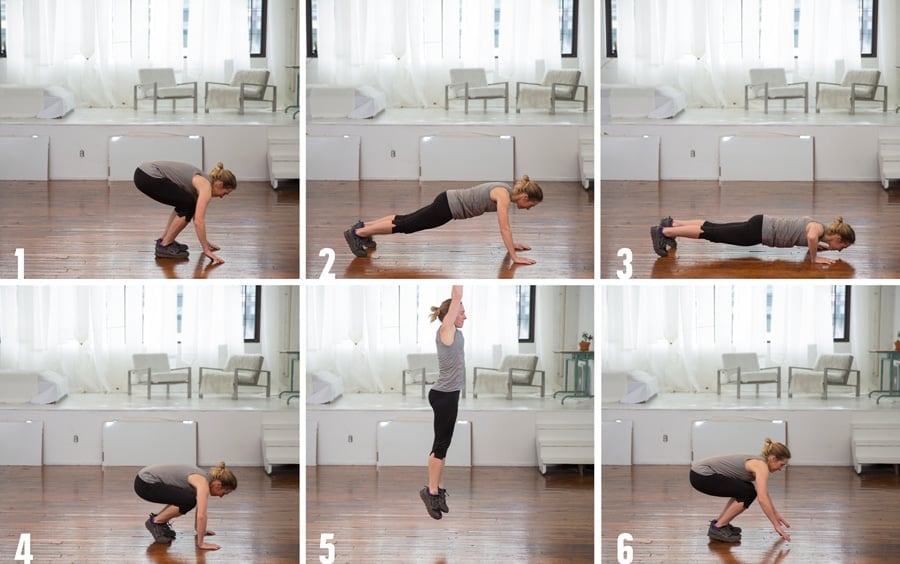While there's no replacement for running if you want to be a strong runner, cross-training by doing other forms of physical activity can really benefit your overall performance by strengthening muscles and increasing flexibility. Pedaling your bike, going for a hike or spending an hour doing yoga are all forms of cross-training for running that can add fun and variety to your training routine.
If you want to know how to cross-train for trail running, our article will cover:
- Benefits of cross-training: Beyond improving strength and flexibility, cross-training can help reduce muscle imbalances, aid in muscle recovery and reduce the boredom of repetitive workouts.
- Types of cross-training: A wide variety of aerobic sports and plyometric exercises can benefit your running game.
- When to cross-train: Try working one to two days of cross-training per week into your training schedule.
Video: Cross Training Exercises for Trail Running
Benefits of Cross-Training
Improved strength and flexibility: Cross-training can help make you a well-rounded athlete by increasing strength and flexibility in muscles that are neglected when all you do is run. By incorporating cross-training, you may notice improved performance on the trail due to your better overall strength.
Injury prevention: Aerobic activities like swimming, cross-country skiing and cycling are all great workouts while giving your body a break from the constant pounding of running. Also, the strength you build from cross-training can help even out muscle imbalances that develop when you focus too much on any single activity.
Recovery: Taking a day off from running gives your body time to recover, which can actually make you stronger. To get stronger, your muscles need time to repair and grow after a tough workout. Cross-training gives your running muscles a break while you work other muscles and get a good cardio workout. To maximize recovery, choose a low-impact cross-training activity and do it at an easy to moderate level.
Rehabilitation: Cross-training can keep you in good shape while giving an injured muscle or joint time to heal. If you're injured, be sure to see a medical professional to develop a proper rehabilitation plan before you begin cross-training.
A break in the boredom: Let's be honest: Sometimes running gets old. Playing a game of soccer, going for a swim, doing yoga or working out in the gym can be a nice mental break from running.
Types of Cross Training

Really any training other than trail running is a form of cross-training. There are a number of sports and activities that will benefit you as a runner. You can also do workouts like plyometric exercises and resistance training.
Hiking: Going for a hike mimics the movements found in trail running but with less impact. It's a great way to build lower-body strength while enjoying the trails and nature at a slower pace.
Cycling: Hop on your bike for a low-impact activity that will build leg strength and improve cardiovascular health. You can focus on hill climbing to develop strength and endurance or do short sprints to improve speed.
Swimming: Swimming is a zero-impact sport that can build upper-body strength and improve cardiovascular health while giving your running legs a break.
Cross-country skiing: Trail-running in the winter can be tough. You either grin and bear the cold temps and potentially snowy trails or stay cooped up inside on the treadmill. Cross-country skiing is a great alternative to wintertime running; it offers a full-body workout that will elevate your heart rate while eliminating much of the impact associated with running.
Team sports: Sports like soccer, Ultimate Frisbee and basketball offer an excellent aerobic workout. When you're running up and down the field or court, you'll still get some mileage in and you'll develop muscles that don't get much of a workout while trail running.
Yoga: Its primary benefit is improved balance, but yoga also improves your flexibility and body awareness. If you've never done yoga before, start by signing up for a beginner's class, then work with your instructor to tailor your sessions and practices for trail running.
Resistance training: Body-weight exercises like push-ups, pull-ups, squats, lunges, sit-ups and planks are all good for developing overall strength. Focusing on leg muscles can help improve your running. If you incorporate weights, go easy, or consider hiring a professional athletic trainer.
Plyometrics: Plyometric workouts (also called "plyos" for short) are essentially jump training. Doing plyos is a great way to train your fast-twitch muscles fibers, build your explosive power and improve strength, which can help you increase your running speed and endurance. With all plyometric exercises, the idea is to exert your maximum effort in short intervals of time.
Sample Plyometric Workout
Here are some examples of plyometric exercises you can work into your cross-training routine. You don't need to do all of these exercises. Start by picking three or four and doing them two or three times per week. To learn proper technique, work with a qualified trainer.

Box jumps (quads, hamstrings, calves, glutes): Box jumps train your fast-twitch muscle fibers for quick reaction times. Squat downward and explode up while swinging your arms to leap onto a box that is about one to two feet high. Step down. Do three sets of 10 reps, with one to two minutes of rest between sets.

Broad jumps (quads, hamstrings, calves, glutes): Broad jumps are an excellent way to improve your lower body power. Start with your legs about shoulder width apart. Swing your arms forward and up and rock onto your toes. As your arms swing back down and behind you, lower your butt and bend your knees in preparation to jump. As your arms start to move forward, explode off the ground to jump forward as far as you can. Absorb the impact of the landing by bending your knees and then go right into your next jump. Make sure you land with your knees over your feet and your back straight. Do three consecutive jumps then walk back to the start and rest. Do five sets with rest in between each set.

Split jumps (quads, hamstrings, glutes, calves): Split jumps build leg strength and improve balance. Start in a lunge position and jump into the air. While in midair, switch your legs so that your back leg is now in front. As you land drop into the lunge position and repeat. Do three sets of 10 reps.

Skater jumps (quads, glutes, calves): Channel your inner speed skater to improve your strength, balance and ability to change direction. Start with your legs shoulder width apart and your knees bent. Push off with your right leg to jump to the left and land on your left foot. As you do so, your right leg will swing behind your left leg. You can touch the ground with your right hand as you're landing on the left foot. Immediately push off with your left foot to jump to the right. Do three sets of 10 reps on each leg.

Tuck jumps (quads, hamstrings, glutes, calves): To improve agility and leg strength while elevating your heart rate, give tuck jumps a try. With your feet shoulder width apart, drop your butt down then drive upward with your arms and push off the floor with your feet. While in the air, lift your knees toward your chest. Land softly, bending your knees to absorb the impact. Do three sets of 10 reps.

Skipping (quads, hamstrings, glutes, calves): Skipping helps develop your lower-leg strength and improve explosive speed. Pick a point about 15-20 meters away and skip to it. Focus on propelling your body up and forward. Swing your arms as you skip to warm up your shoulders. Turn around and skip back. Then rest for a minute or two and repeat.

Single-Leg Hopping (quads, calves, ankle invertors and evertors): This exercise develops calf and quad strength while also improving your ankle strength for better balance. Stand on one foot and hop to a point about 15-20 meters away. Switch feet and hop back to the starting point. Repeat. You can also do side-to-side hops to develop greater lateral stability.

Burpees (quads, glutes, hamstrings, calves, abs, arms, chest, triceps): Burpees are a full-body workout that will get your muscles and lungs burning. In addition to the cardio and muscle workout, they're good for training your agility and balance. Start standing with your feet shoulder width apart and your arms at your side. In one smooth motion, squat down, place your hands down on the ground in front of you and kick your feet back so you're in the plank position. Do a push-up so that your chest touches the ground and return to plank position. Now jump your feet in toward your hands then explode straight up to jump off the ground while reaching your hands up over your head. When you land, immediately go into another burpee. Do two sets of 10, with rest in between the sets.
When to Cross-Train
Try to incorporate one to two days of cross-training per week into your training. You can intersperse the cross-training between running days. Depending on your priorities, you can cross-train more frequently than that, but remember that if you want to be a stronger runner, you need to run. Be careful not to let cross-training take over your training plan.

